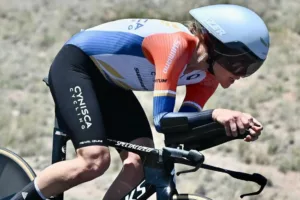Clipless pedals and cleats are a significant upgrade for many cyclists, offering improved efficiency and bike control. This comprehensive guide will walk you through everything you need to know about clipless pedals and cleats, from the basics of how they work to the different types available. We’ll also cover key factors to consider when choosing the right pair for your cycling needs, including compatibility, ease of use, and the type of riding you do. Whether you’re a road cyclist, mountain biker, or commuter, understanding clipless pedals and cleats can enhance your riding experience and take your performance to the next level.
Table of Contents
Toggle1. What are Clipless Pedals and Cleats?
Clipless pedals and cleats are a two-part system for bicycles that securely attach the rider’s shoe to the pedal. The term ‘clipless’ is a bit of a misnomer, as you actually ‘clip in’ to the pedal’s mechanism. The system was named in contrast to the older ‘toe clip’ method, which used straps to secure the shoe. Clipless pedals provide a more secure connection between the rider and the bike, allowing for more efficient power transfer during pedalling.
Clipless pedals are typically used in conjunction with specific cycling shoes. These shoes have a cleat mounted to the sole that engages with the mechanism on the pedal. The cleat can be adjusted to the rider’s preference, allowing for a comfortable and efficient pedalling motion.
There are two main types of clipless systems: two-hole (also known as SPD) and three-hole (known as Look-style). The two-hole system is typically used for mountain biking, while the three-hole system is more common for road cycling.
Despite the advantages of clipless pedals and cleats, some cyclists prefer traditional flat pedals, especially for casual and urban riding. Flat pedals don’t require special shoes and allow the rider to quickly get on and off the bike.
Clipless pedals and cleats can be a bit intimidating for beginners, but with practice, clipping in and out becomes second nature. It’s essential to adjust the pedals and cleats correctly to ensure a comfortable and efficient ride.
For more information on different types of pedals and how to choose the right one for your needs, check out our tips and reviews.
2. How Do I Install Clipless Pedals and Cleats?
Installing clipless pedals and cleats is a straightforward process that requires a few tools. The pedals are usually attached to the bike with a pedal wrench, while the cleats are mounted to the shoes with a screwdriver. A basic cycling toolkit should contain everything you need.
First, remove the old pedals from the bike. The left pedal has a left-hand thread, so turn it clockwise to remove. The right pedal has a right-hand thread, so turn it anti-clockwise to remove it.
Next, screw the new clipless pedals into the crank arms. Remember that the left pedal has a left-hand thread and should be turned anti-clockwise to tighten, and the right pedal has a right-hand thread and should be turned clockwise to tighten.
To install the cleats, first, place them on the bottom of the shoes in the approximate position you want them. Most cyclists prefer the cleat to be positioned so that the ball of the foot is directly over the pedal axle.
Once the cleats are in the correct position, use a screwdriver to tighten the screws. Be careful not to over-tighten, as this can damage the shoes or the cleats.
After the cleats are installed, it’s essential to adjust them to the correct angle. This will depend on your personal preference and pedalling style.
Finally, test the setup by clipping in and out of the pedals. Make sure the cleats engage and disengage smoothly and that the shoe is secure when clipped in.
Remember, installing and adjusting clipless pedals and cleats can take some time and experimentation. Don’t be discouraged if you don’t get it perfect the first time.
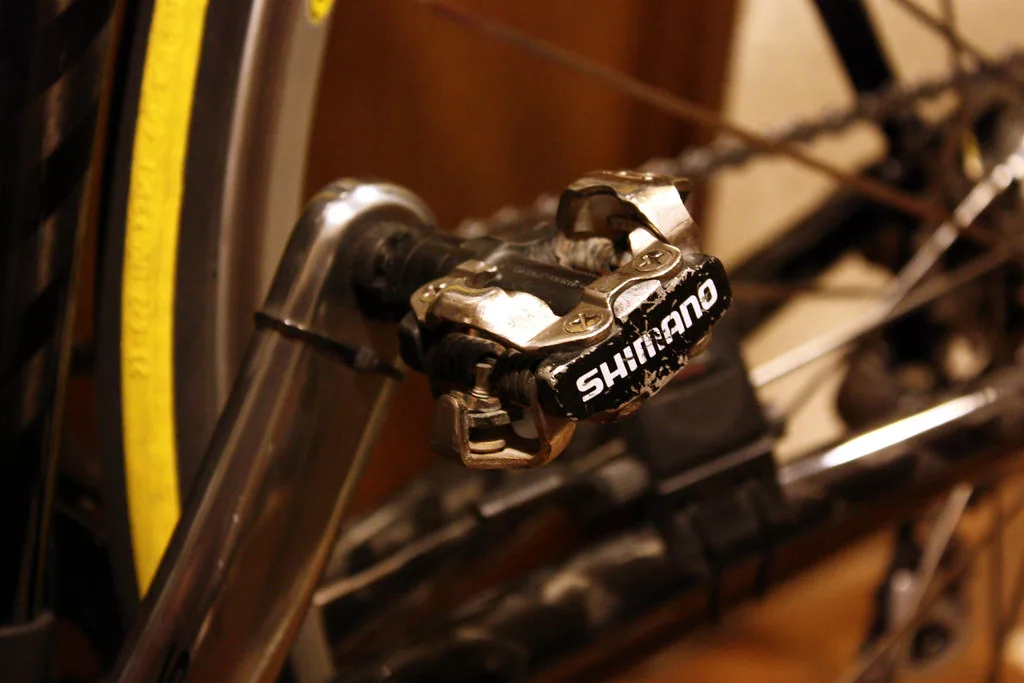
3. How Do I Use Clipless Pedals and Cleats?
Using clipless pedals and cleats can be intimidating at first, but with practice, it becomes second nature. Here are some steps to help you get started:
First, make sure your bike is in a stable position. You can use a wall or a stationary object for support.
Next, put on your cycling shoes with the cleats attached. Stand next to the bike and place one foot on the ground for stability.
To clip in, align the cleat with the pedal and push down. You should hear a click when the cleat engages with the pedal.
Once you’re clipped in, try to pedal a few times while holding onto the wall or stationary object for support.
To clip out, twist your heel outward. The cleat should disengage from the pedal with a click.
Practice clipping in and out several times until you feel comfortable. It’s normal to feel a bit awkward at first, but don’t worry, it gets easier with practice.
When you’re ready to ride, start with one foot already clipped in. Push off with the other foot and then clip in as soon as you can.
Remember to always clip out before you stop. This will prevent you from falling over when you stop.
Using clipless pedals and cleats can greatly enhance your cycling experience, providing better power transfer and more control over the bike.
4. What are the Benefits of Using Clipless Pedals and Cleats?
There are several benefits to using clipless pedals and cleats. First and foremost, they provide a more secure connection between the rider and the bike. This allows for better power transfer during pedalling, which can improve speed and efficiency.
Clipless pedals and cleats also allow for more control over the bike. Because your feet are securely attached to the pedals, you can use your legs to help control the bike, especially when cornering or descending.
Another benefit of clipless pedals and cleats is that they can improve pedalling efficiency. By securing the foot to the pedal, it’s easier to maintain a smooth and consistent pedalling motion. This can reduce fatigue and make longer rides more comfortable.
Clipless pedals and cleats also allow for a more natural foot position. Unlike flat pedals, which can force the foot into an unnatural position, clipless pedals allow the foot to pivot slightly, which can reduce strain on the knees and ankles.
Despite these benefits, clipless pedals and cleats may not be the best choice for everyone. They can be a bit intimidating for beginners, and they require special shoes. However, for those who are serious about cycling, clipless pedals and cleats can be a game-changer.
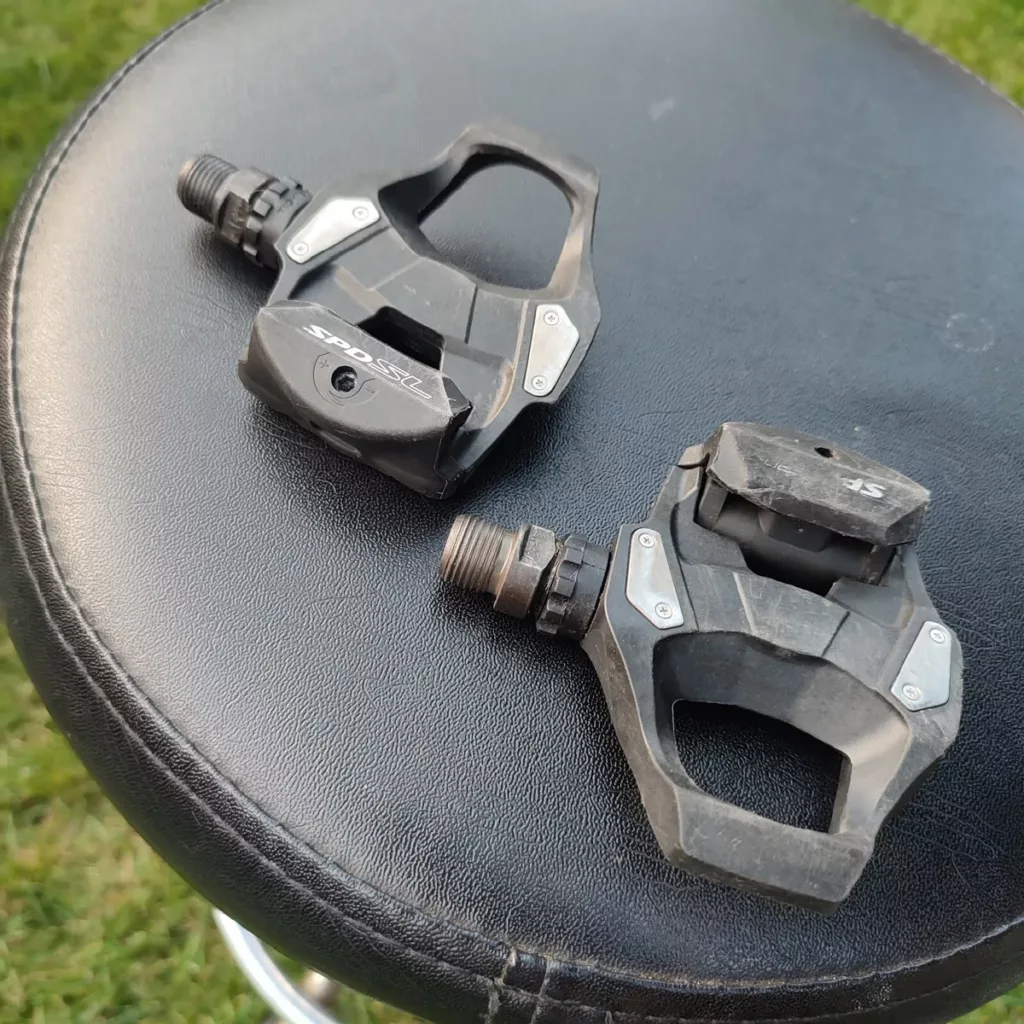
5. What are the Drawbacks of Using Clipless Pedals and Cleats?
While clipless pedals and cleats offer many benefits, they also have a few drawbacks. One of the main drawbacks is that they require special cycling shoes. These shoes can be expensive, and they may not be as comfortable or practical for walking as regular shoes.
Another drawback of clipless pedals and cleats is that they can be difficult to use at first. Clipping in and out of the pedals requires practice, and it’s not uncommon for beginners to fall over when they forget to unclip.
Clipless pedals and cleats can also be less practical for urban cycling. When riding in the city, you often have to stop and start frequently, which can be cumbersome with clipless pedals.
Another potential drawback is that clipless pedals and cleats can cause knee problems if not adjusted correctly. It’s essential to set up the pedals and cleats correctly to ensure a comfortable and efficient pedalling motion.
Despite these drawbacks, many cyclists find that the benefits of clipless pedals and cleats far outweigh the disadvantages. With practice and proper adjustment, clipless pedals and cleats can greatly enhance your cycling experience.
6. How Do I Choose the Right Clipless Pedals and Cleats?
Choosing the right clipless pedals and cleats depends on several factors, including your cycling style, comfort preferences, and budget.
First, consider what type of cycling you do. If you’re a road cyclist, you’ll likely prefer a three-hole system, which offers a larger platform and more stability. If you’re a mountain biker, a two-hole system may be more suitable, as it allows for easier walking and mud shedding. Cycling tourers swear by the SPD cleat as it can be recessed into shoes, like the Velosamba, allowing them to walk around normally off the bike too.
Next, consider your comfort preferences. Some cyclists prefer a lot of float (the degree to which the foot can pivot while clipped in), while others prefer a more secure feel.
Budget is also a consideration. Clipless pedals and cleats range in price from relatively inexpensive to very high-end. While more expensive models often offer better performance and durability, there are plenty of affordable options that are also high quality.
Finally, make sure to try on several different shoes and pedals before making a decision. The fit and feel of the shoes and pedals can vary widely, and it’s important to find a setup that feels comfortable and natural.
Remember, choosing the right clipless pedals and cleats is a personal decision. What works for one person may not work for another. It’s worth taking the time to find the right setup for your needs and preferences.
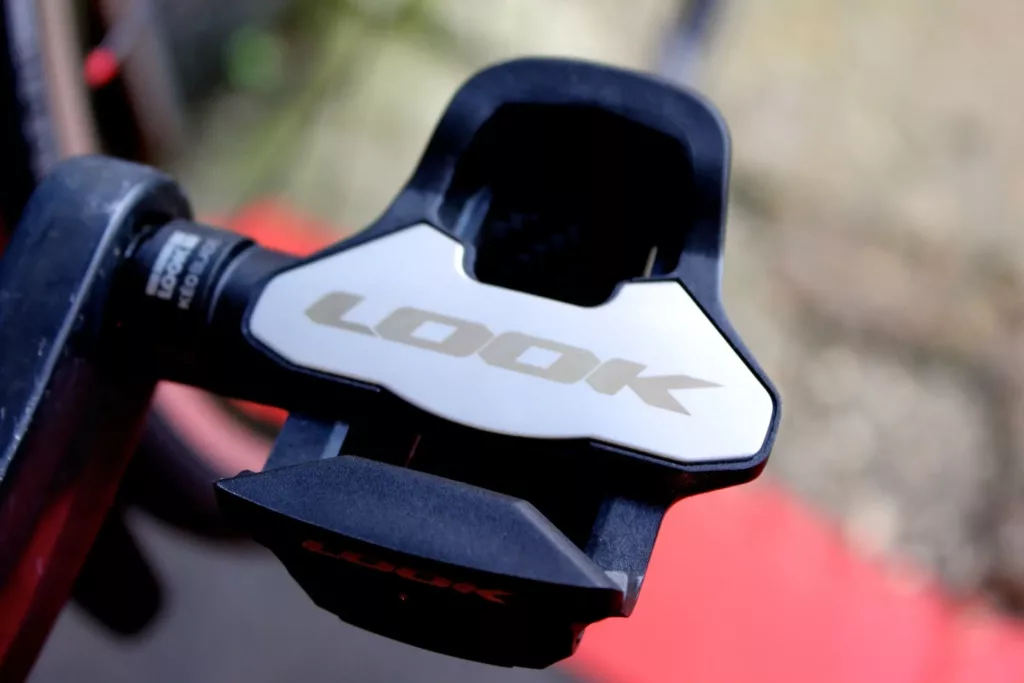
7. How Do I Maintain Clipless Pedals and Cleats?
Maintaining clipless pedals and cleats is relatively straightforward. The main thing is to keep them clean and free of dirt and debris, which can interfere with the clipping mechanism.
After a ride, especially a muddy or wet one, it’s a good idea to clean the pedals and cleats with a brush and soapy water. Make sure to dry them thoroughly to prevent rust.
It’s also important to check the cleats regularly for wear. Over time, the cleats can wear down, which can affect their performance. If the cleats are worn or damaged, they should be replaced.
The pedals should also be checked regularly for any signs of damage or wear. If the pedals are damaged or not functioning properly, they should be replaced.
Finally, some clipless pedals require periodic lubrication. Check the manufacturer’s instructions for specific maintenance recommendations.
With proper maintenance, clipless pedals and cleats can last for many years and provide a reliable and efficient connection between you and your bike.
8. Can I Use Clipless Pedals and Cleats on Any Bike?
In general, clipless pedals can be used on any bike that has standard pedal threads. This includes most road bikes, mountain bikes, and hybrid bikes.
However, there are some exceptions. Some bikes, especially older models, may have non-standard pedal threads that are not compatible with modern clipless pedals.
In addition, some types of bikes, such as BMX bikes and some commuter bikes, typically use flat pedals and may not be suitable for clipless pedals.
When choosing clipless pedals, it’s also important to consider the type of cycling you do. For example, road cyclists typically prefer a three-hole system, while mountain bikers typically prefer a two-hole system.
Finally, keep in mind that using clipless pedals requires special cycling shoes with compatible cleats. These shoes can be expensive, and they may not be as comfortable or practical for walking as regular shoes.
Despite these considerations, clipless pedals and cleats can be a great addition to any bike, providing a more secure and efficient connection between the rider and the bike.
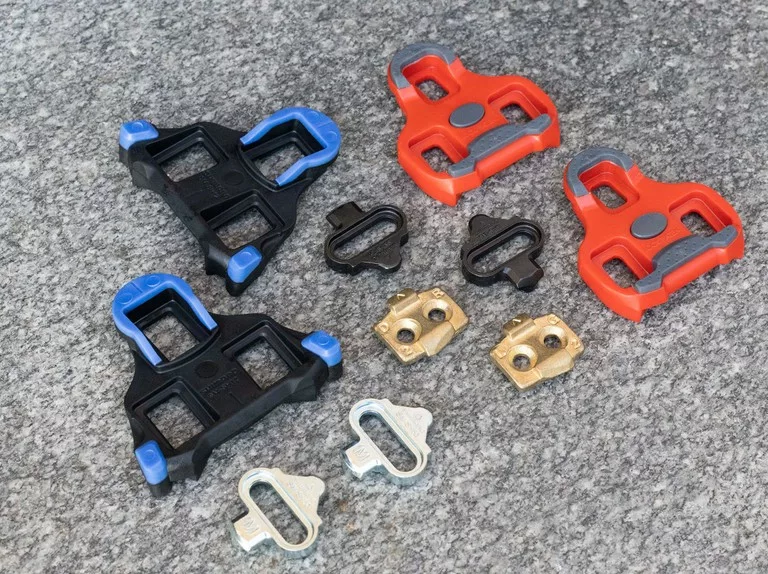
9. Are Clipless Pedals and Cleats Safe?
Clipless pedals and cleats are generally safe to use, as long as they are used correctly. The main safety concern is the risk of falling over when you forget to unclip, especially at low speeds or when stopping.
However, with practice, clipping in and out becomes second nature, and the risk of falling is greatly reduced. It’s a good idea to practice clipping in and out in a safe and controlled environment before hitting the road.
Another safety concern is the potential for knee problems if the pedals and cleats are not set up correctly. It’s essential to adjust the cleats to the correct position and angle to ensure a comfortable and efficient pedalling motion.
Finally, it’s important to maintain the pedals and cleats properly to ensure they function correctly. Regularly check the cleats for wear and replace them if necessary. Also, keep the pedals clean and free of dirt and debris, which can interfere with the clipping mechanism.
With proper use and maintenance, clipless pedals and cleats are a safe and effective way to enhance your cycling experience.
10. Are Clipless Pedals and Cleats Worth the Investment?
Whether clipless pedals and cleats are worth the investment depends on your cycling goals and preferences. If you’re a casual cyclist who mainly rides for fun or commuting, flat pedals may be perfectly adequate for your needs.
However, if you’re a more serious cyclist or if you’re interested in improving your speed and efficiency, clipless pedals and cleats can be a worthwhile investment. They provide a more secure connection between the rider and the bike, allowing for better power transfer and more control.
Clipless pedals and cleats also allow for a more natural foot position and a smoother pedalling motion, which can reduce fatigue and make longer rides more comfortable.
However, keep in mind that clipless pedals and cleats require special shoes, which can be an additional expense. They also require practice to use effectively and can be less practical for urban cycling.
Ultimately, whether clipless pedals and cleats are worth the investment is a personal decision. It’s worth trying them out to see if they enhance your cycling experience.



